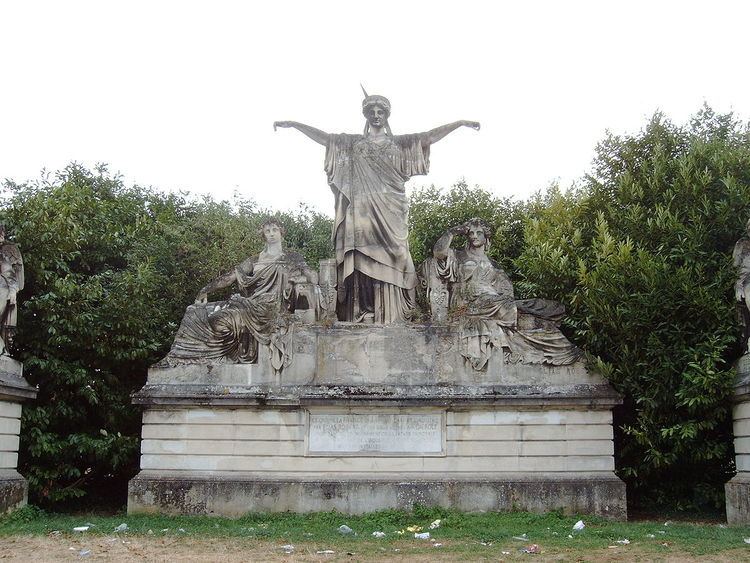 | ||
France Crowning Art and Industry (French: La France couronnant l'Art et l'Industrie) is a 6.50 m (21 ft) tall limestone sculpture group which decorated the top of the entrance of Palais de l'Industrie, the main building of the 1855 international exhibition in Paris. It was moved to the park of Saint-Cloud in 1900 when the palais de l'Industrie was demolished. The center group, composed of the three allegories (France, Art and Industry) is a work by sculptor Élias Robert. The two putti groups located on its sides are by Georges Diebolt. The wreaths France was carrying in her hands and most of the rays of the radiant crown she wears have now disappeared.
Iconographic precedents
This sculpture is thought to have been inspired by Pierre Cartellier's bas-relief Victory in a quadriga distributing wreaths (1810), at the East entrance of the Louvre palace, and to be a possible inspiration for the New York Statue of Liberty.
A bas-relief on the same subject : France distributing wreaths to the Arts and Industry, sculpted by Jean-Baptiste Louis Roman in 1830, is located on the wall behind the seat of the president of the National Assembly in the hemicycle of Palais Bourbon.
In 1851, Georges Diebolt sculpted La France rémunératrice (Remunerative France), a colossal female figure wearing and distributing wreaths, for a ceremony of awards on the Champs-Élysées, for the French industrialists who had been distinguished at the London Great Exhibition. A small size bronze reduction which was exhibited at the Exposition Universelle of 1855 is now in Musée d'Orsay.
